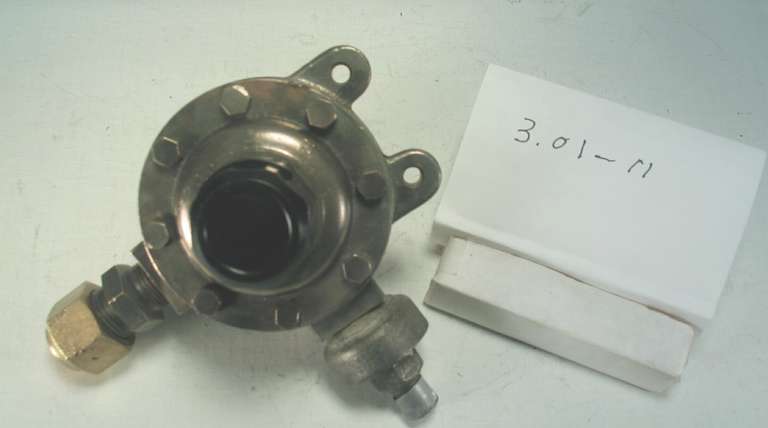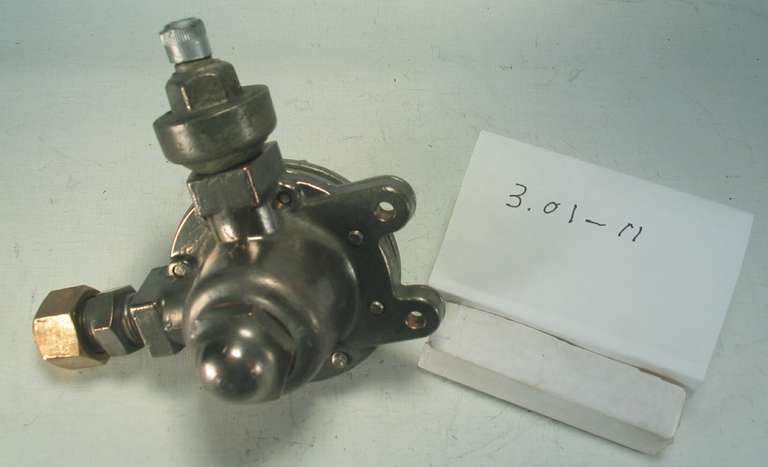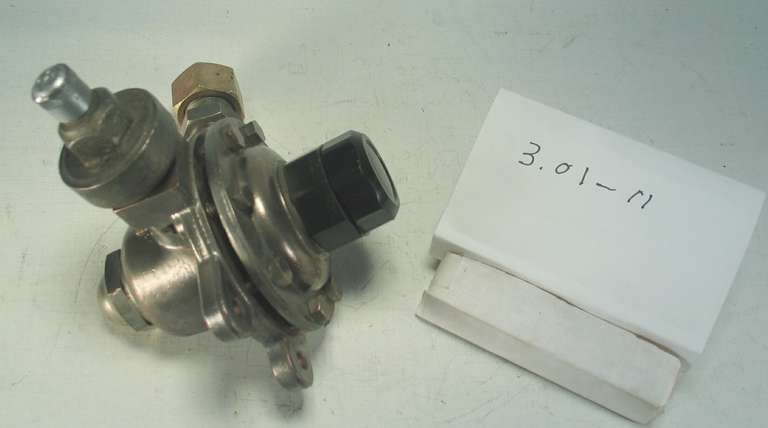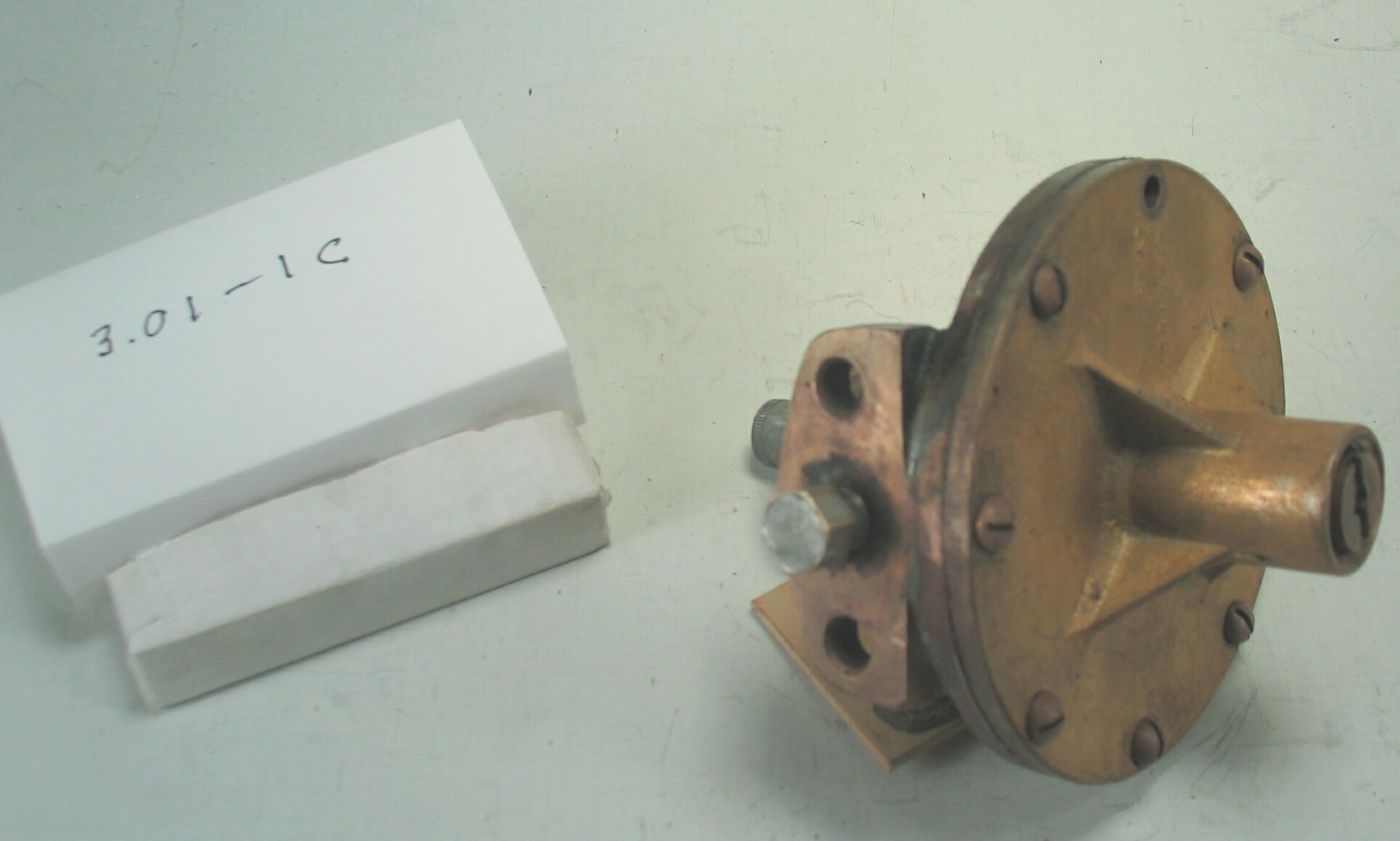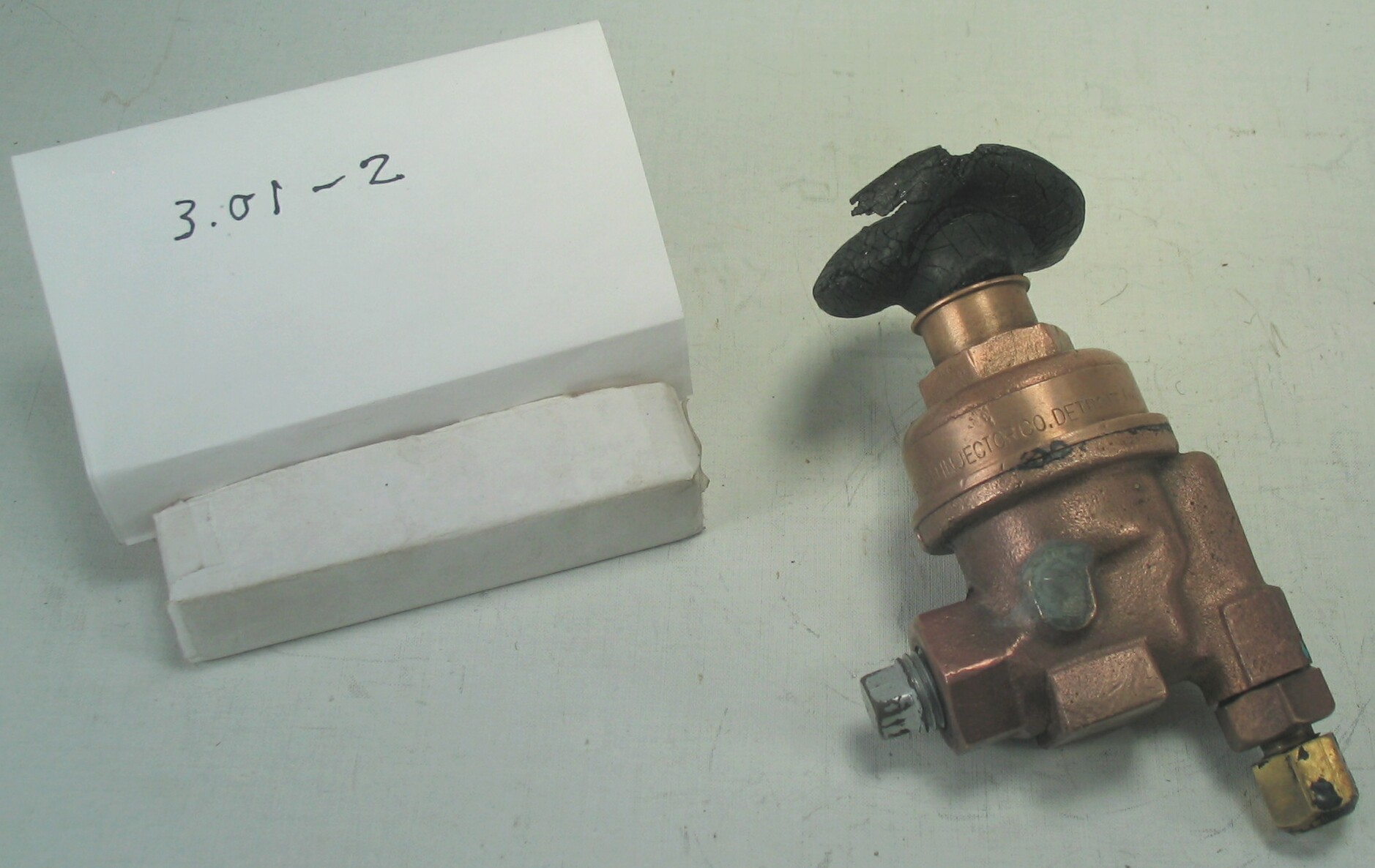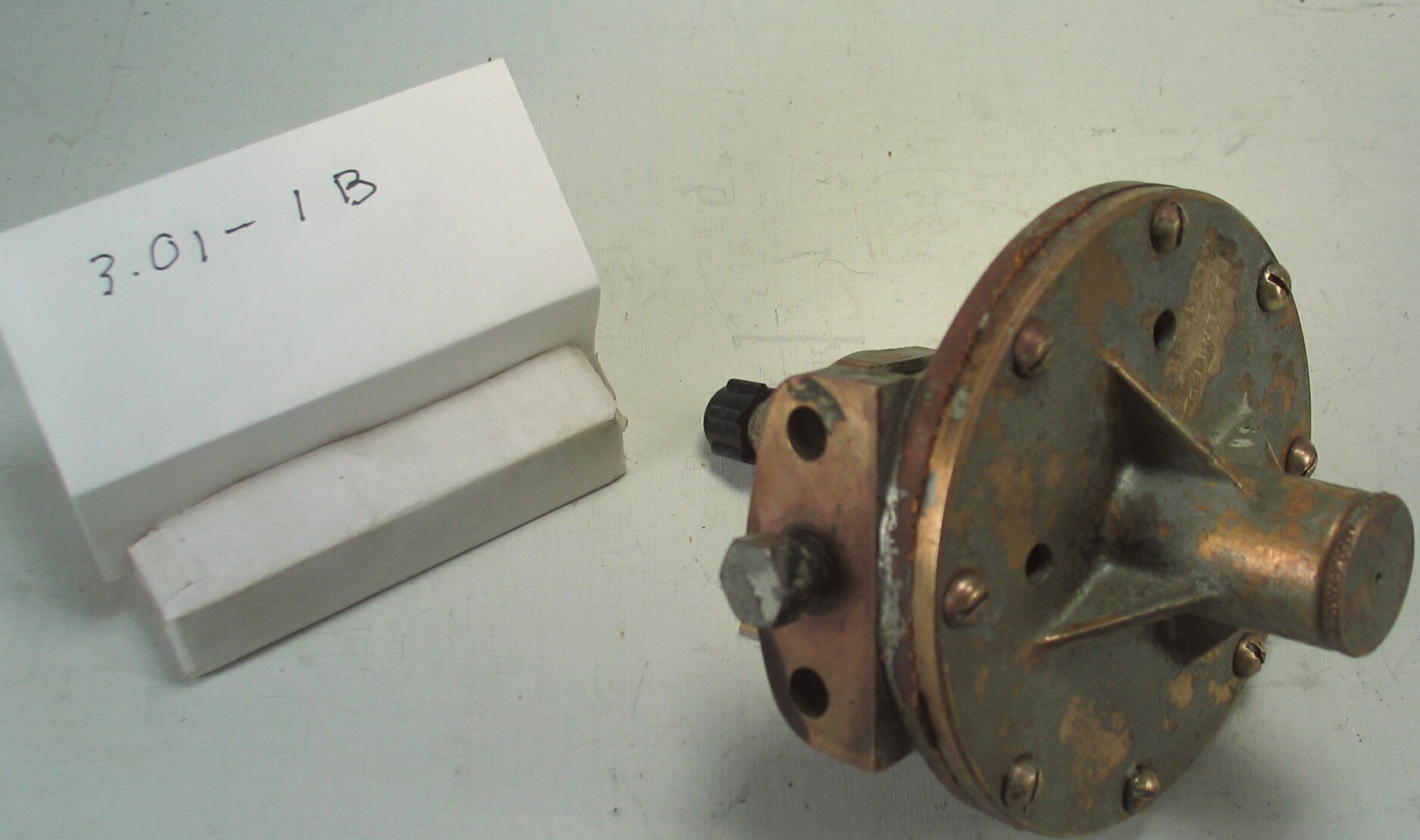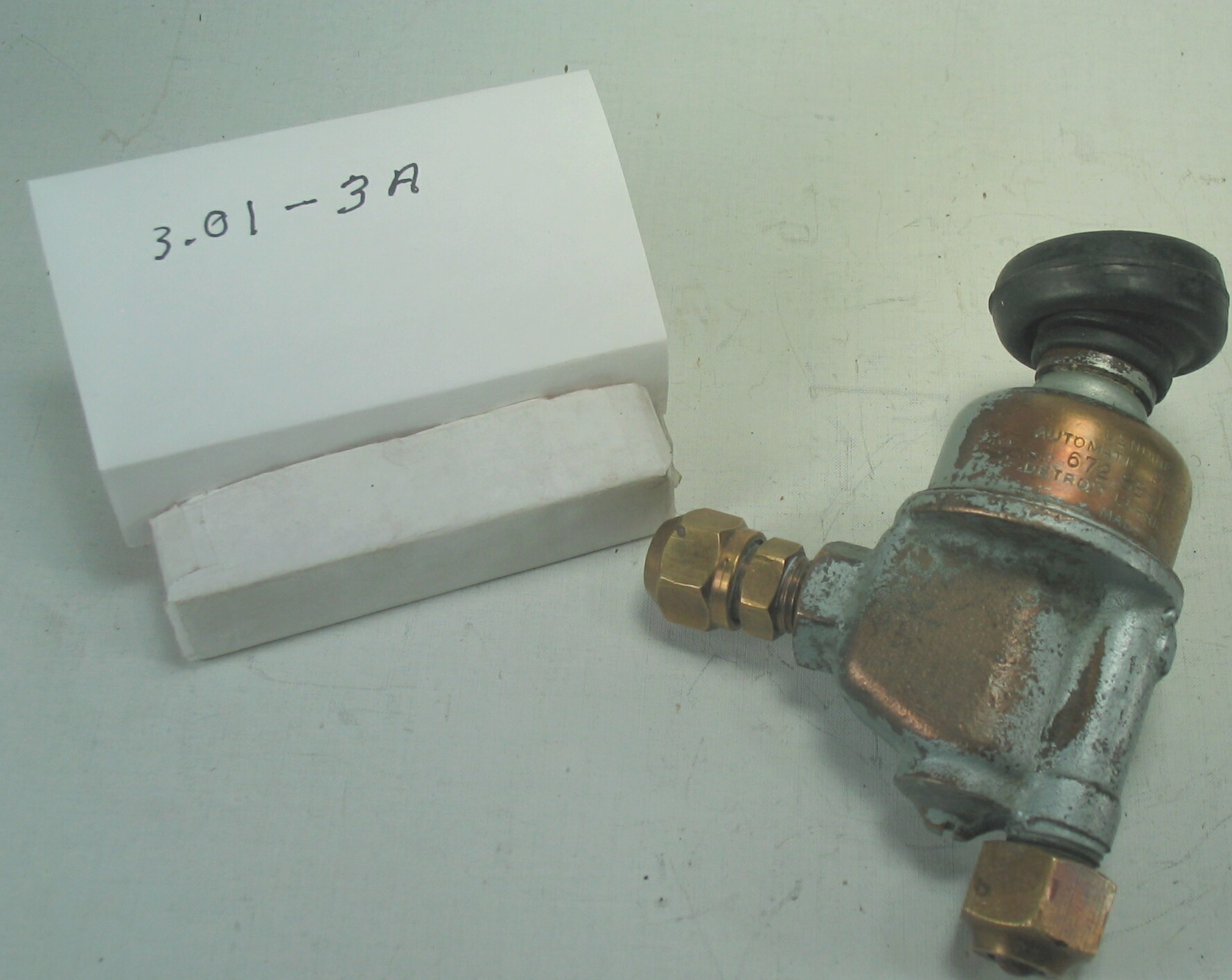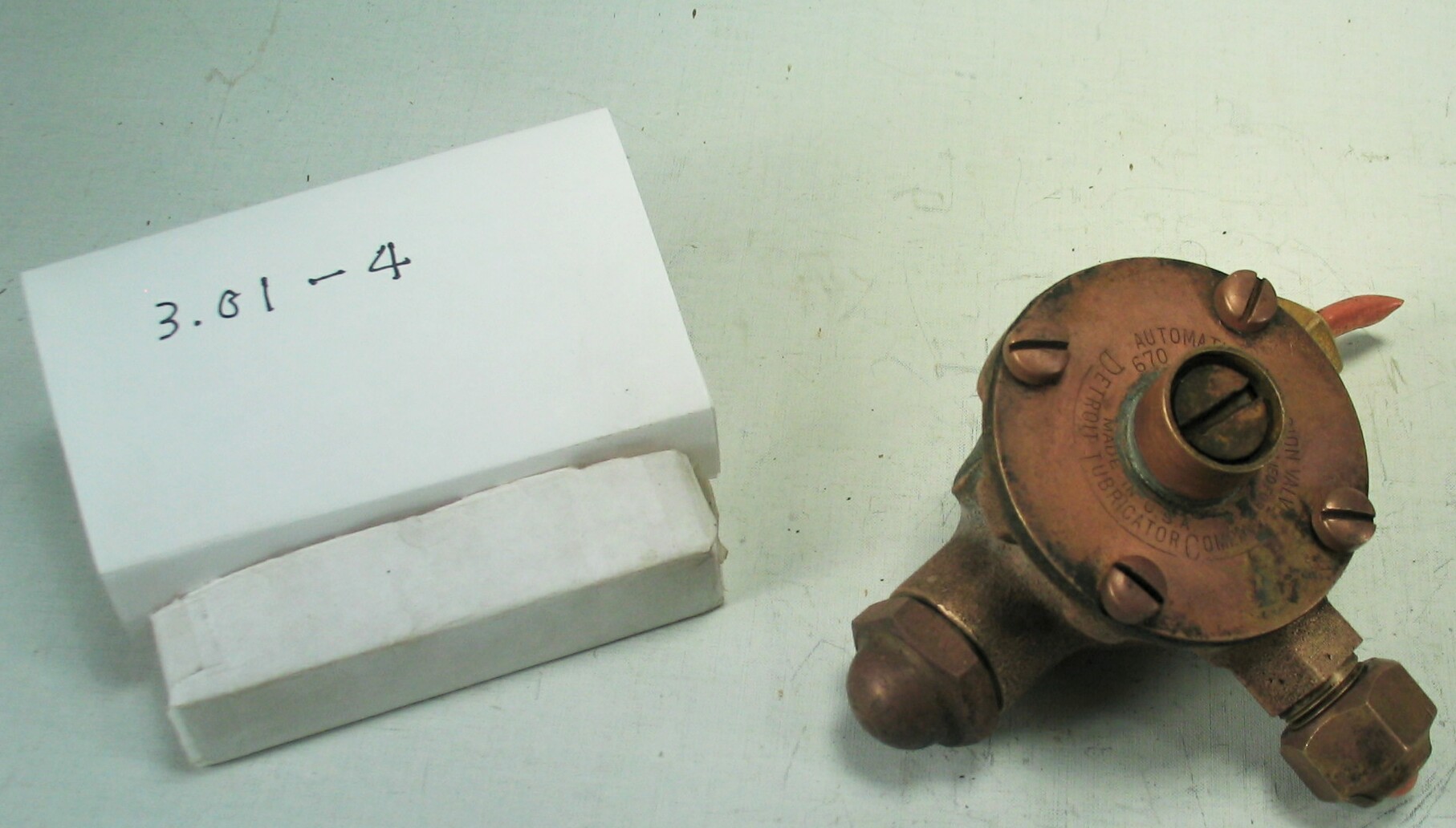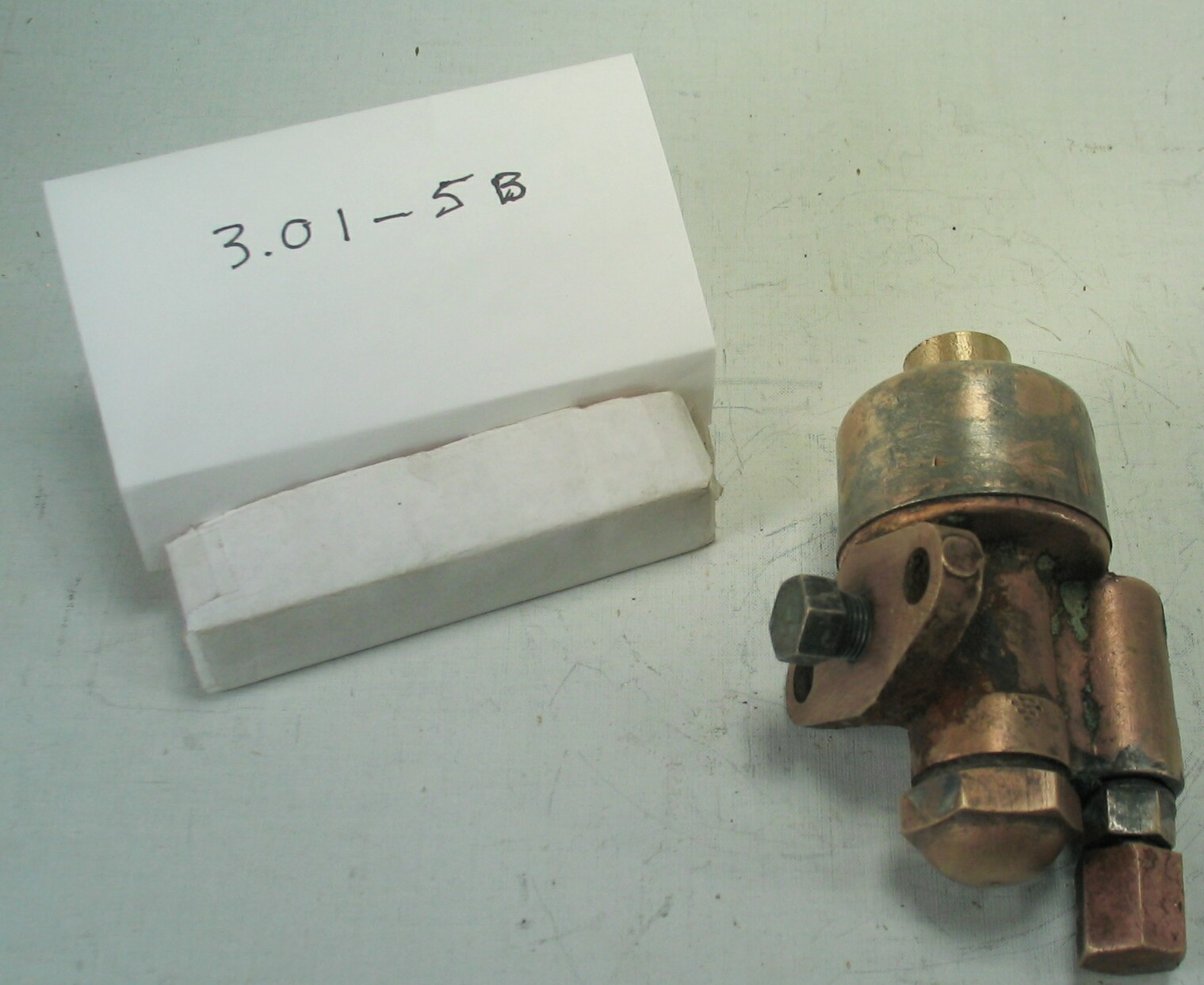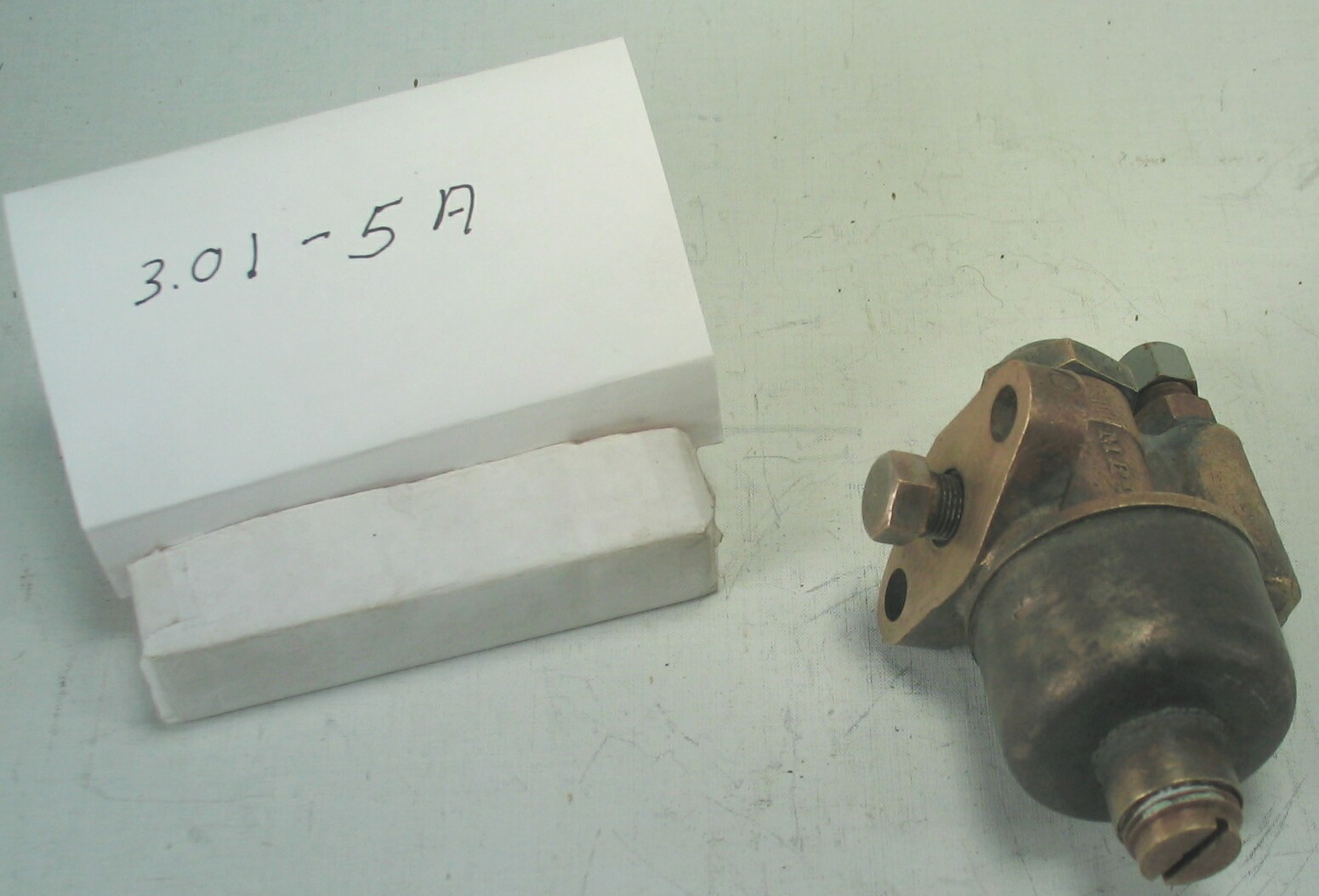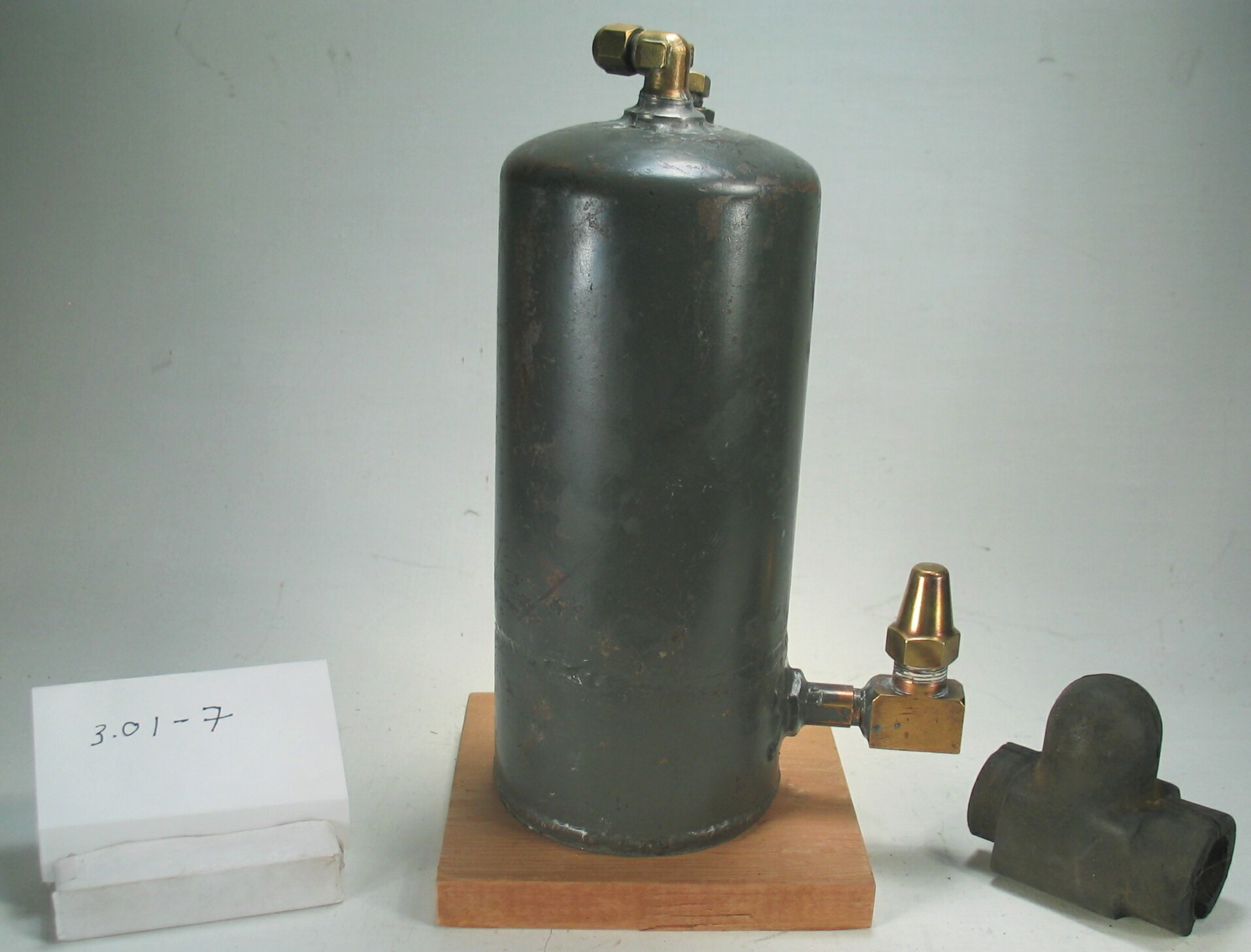3.01-11: Frigidaire 1934 Second Generation, Automatic, Expansion Valve
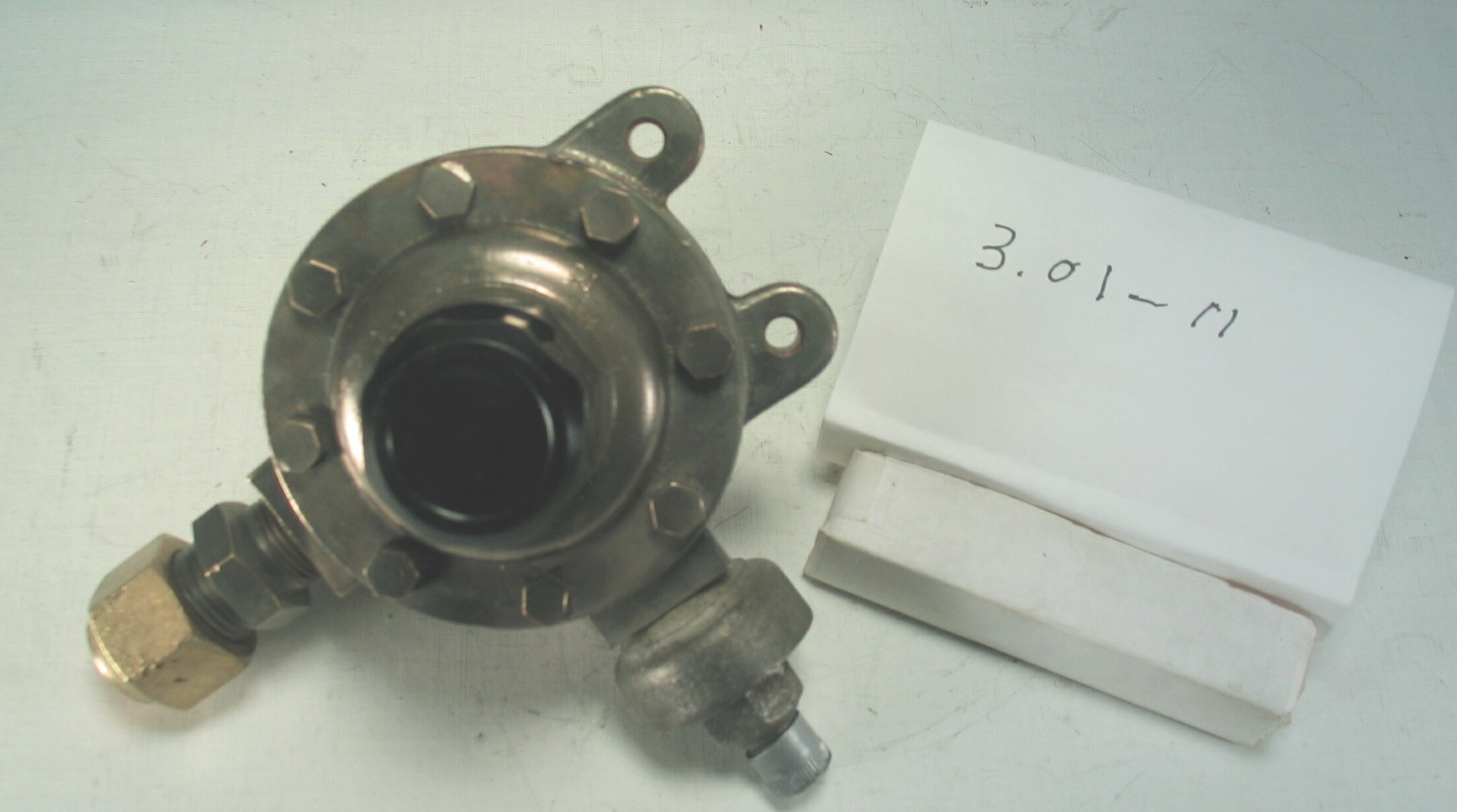
| HHCC Accession No. 2006.057 | HHCC Classification Code: 3.01-11 |
|---|
Description:
A Second generation, Frigidaire, automatic, adjustable expansion valve; housed in a 4 lb. solid cast brass body with galvanised over coat; with integral two point mounting bracket, inlet screen and Bakelite moisture proof cap; pressure actuated bellows design; engineered for sulphur dioxide or Freon 12 refrigerant; Model S, Frigidaire, circa 1934.
Group:
3.01 Refrigerant Flow Controls - Household
Make:
Frigidaire
Manufacturer:
Frigidaire Corporation
Model:
S
Serial No.:
Size:
5 x 4 x 4 in. h
Weight:
4 lbs.
Circa:
1934
Rating:
Exhibit, education, and research quality, illustrating the engineering design, construction, and operating principles of second generation, advanced design, mid 1930’s expansion valves produced by Frigidaire, employing a bellows design and moisture proof cap, calibrated for use on Freon 12, as well as sulphur dioxide.
Patent Date/Number:
Provenance:
From York County (York Region) Ontario, once a rich agricultural hinterlands, attracting early settlement in the last years of the 18th century. Located on the north slopes of the Oak Ridges Moraine, within 20 miles of Toronto, the County would also attract early ex-urban development, to be come a wealthy market place for the emerging household and consumer technologies of the early and mid 20th century.
This artifact was discovered in the 1950’s in the used stock of T. H. Oliver, Refrigeration and Electric Sales and Service, Aurora, Ontario, an early worker in the field of agricultural, industrial and consumer technology.
Type and Design:
Automatic refrigerant pressure compensated Bellows actuated
Construction:
Cast brass body, with galvanized over coat
Material:
Special Features:
Accessories:
Capacities:
Performance Characteristics:
Operation:
Control and Regulation:
Targeted Market Segment:
Consumer Acceptance:
Merchandising:
Market Price:
Technological Significance:
An advanced design expansion valves produced by Frigidaire, following their early experience in expansion valve engineering for dry evaporators. Significant for the period was the calibration of the valve for alternate use on the then new series of chlorinated hydrocarbon refrigerants, Freon 12, as well as for sulphur dioxide. Large inlet filter screen has also been provided on this model, a necessary feature for helping to ensure reliable, service free operation over extended periods of time. Frigidaire moved to the use of a bellows pressure activating mechanism in this generation of valves, rather than the earlier diaphragm mechanism, following the trend.
A perennial, problem with such valves, experienced by Frigidaire and other manufacturers was freeze up do to moisture entering the valve through the manual adjustment mechanism. Frigidaire’s answer was, here, in the form of a condensation retarding, Bakelite cap, as an alternative to rubber and metal caps
Industrial Significance:
Socio-economic Significance:
Socio-cultural Significance:
The socio-cultural significance of the impact of the unobtrusive, automatic expansion valve on life in Canada, throughout the early part of the 20th century, would be hard to over-estimate. It would become the quintessential, automated refrigerant flow regulating device used in homes, farms and commercial refrigeration applications across the country, giving way to other flow control devices, including thermostatic expansion valves and capillary lines, as the century progressed. It was a period in which machinery in the home was often not at all welcome, being viewed with the suspicion that comes with novelty. Machinery belonged on the farm and on the factory floor, but not in the Canadian home. Here it was considered noisy and hazardous, a potential threat to personal and private property. The mere notion of a self regulating, mechanical device that could be trusted to stop and start and self regulate itself reliably, over long periods of time was simply not part of popular experience of Canadians of the time. Thus, in addition to the immense array technical problems which remained to resolved, there was an equally large array of socio- cultural challenges to be over come by manufactures in convincing their public to be early adopters of refrigeration technology in the home - in the face of massive mistrust and apprehension. Conversely, for those that were in a financial postion of enjoying the many benefits of the technology, there were multiple factors tending to attract advocates. Included were: the human need to be seen as an early, recognized leader in adoption, the need for socio-economic status in the community, as well as the allure of new taste sensations, a break with overwhelming, desperate boredom of the daily dietary offerings of the period.
Donor:
G. Leslie Oliver, The T. H. Oliver HVACR Collection
HHCC Storage Location:
Tracking:
Bibliographic References:
Installation and Service Manual, SER,_405, For Products Manufactured Prior to 1937, Frigidaire Division, General Motores Corp. Dayton Ohio
